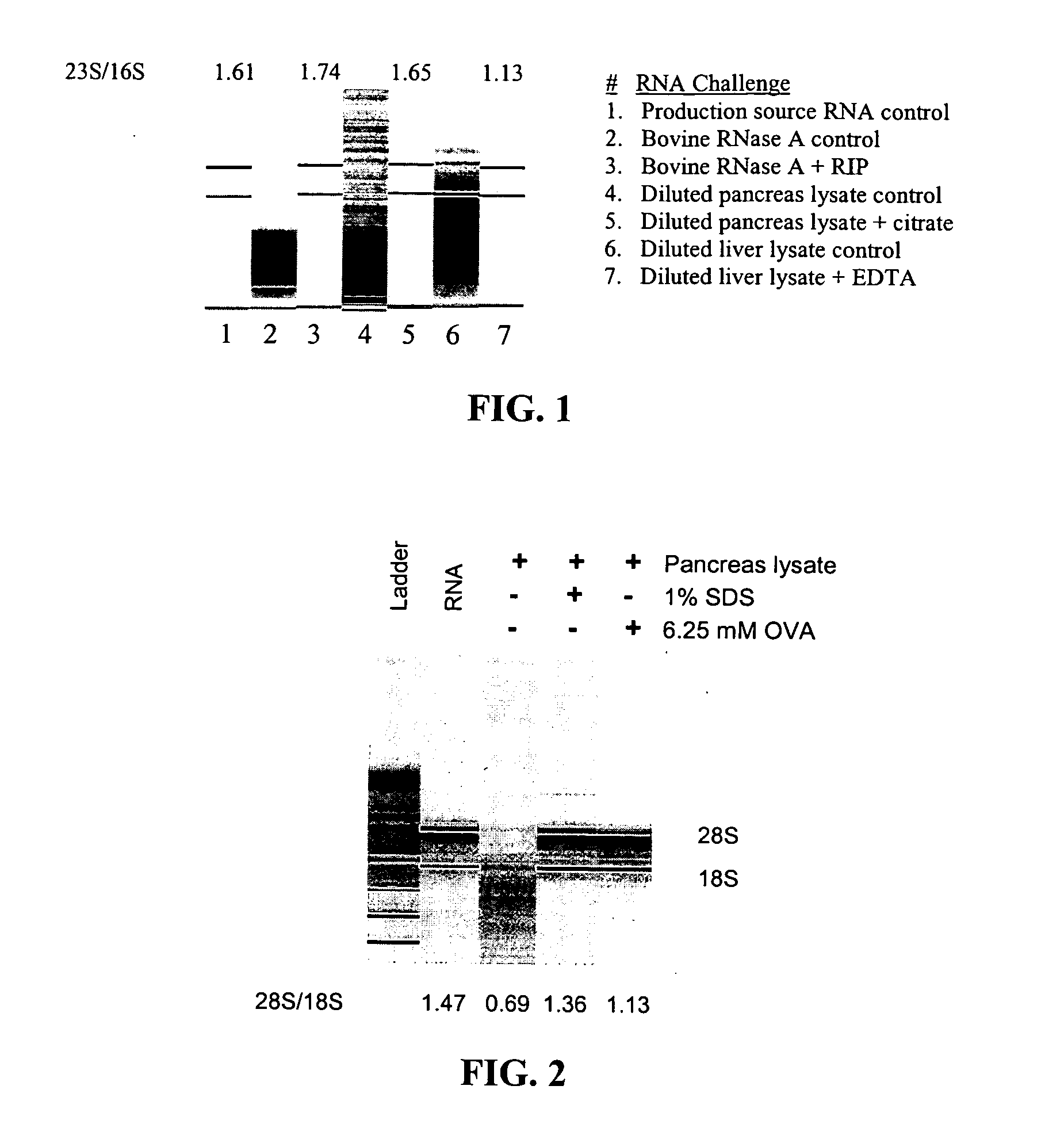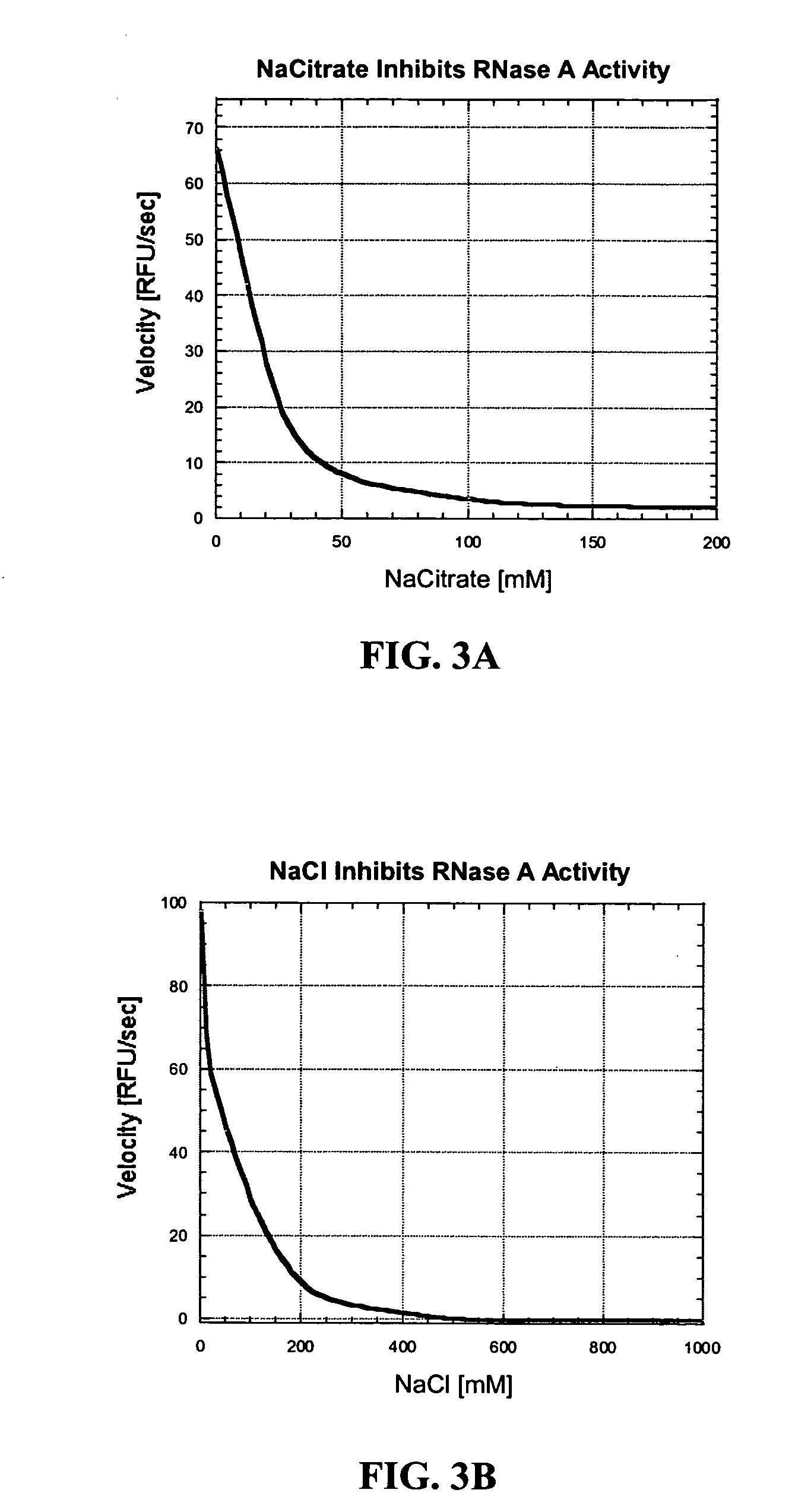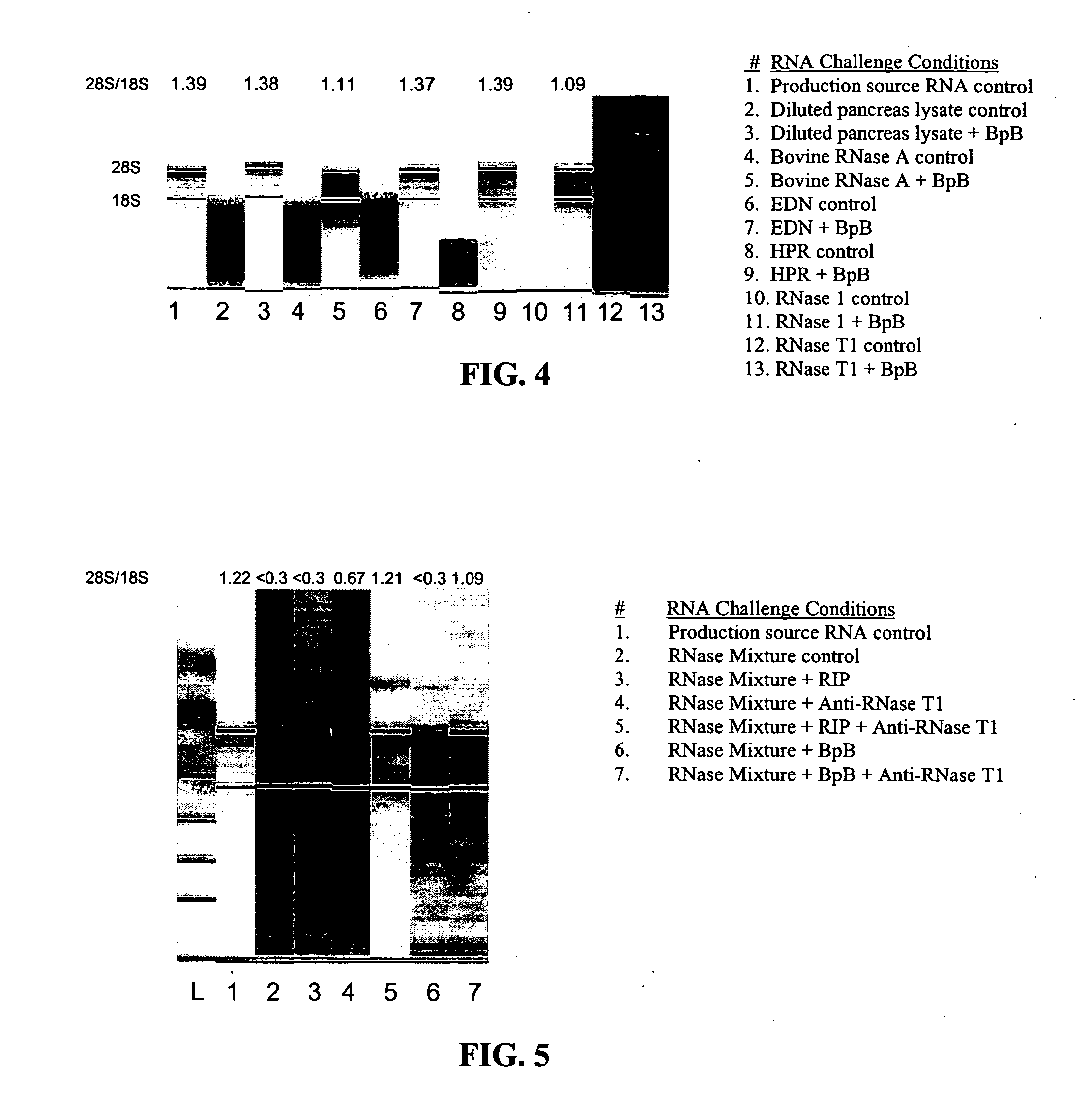Nuclease inhibitor cocktail
a technology of nuclease inhibitor and cocktail, which is applied in the field of molecular biology, can solve the problems of time-consuming and labor-intensive treatment of samples with depc, difficult inactivation of ribonucleases, and hazardous to humans
- Summary
- Abstract
- Description
- Claims
- Application Information
AI Technical Summary
Benefits of technology
Problems solved by technology
Method used
Image
Examples
example 1
Criteria for the Analysis of Nuclease Inactivation
The inventors routinely perform assays on RNA and DNA designed to assess RNase and DNase activity in a sample. Many assays may be used for the detection of nuclease activity, including isotopic and non-isotopic assays. The assays generate similar data with regard to the sensitivity of detection.
In such assays, the inactivation process can be performed, for example, on a mixture of three different ribonucleases: RNase A, RNase 1, and RNase T1. Each ribonuclease may be purified from a different species: human, E. coli and fungal, respectively. The three RNases are very different from each other in their origin, substrate specificity, and protein sequence. In this way, the inactivation process can test three completely different but well characterized ribonucleases.
By employing assays, one of skill will be able to determine additional anti-nuclease antibodies, small molecules, proteinaceous compounds and organic compounds that fun...
example 2
Preparation and Isolation of Anti-Nuclease Antibodies
Anti-nuclease antibodies are generated by injecting rabbits with, for example, purified antigens RNase A, RNase T1, RNase 1, Micrococcal nuclease, or S1 nuclease mixed with complete or incomplete Freund's adjuvant. Complete adjuvant (0.5 ml) is mixed with 0.5 ml of antigen solution containing 100 μg of antigen in PBS buffer, and drawn into a syringe with an attached 19-G needle. For the first immunization, 100 μg of the antigen in 0.5 ml of complete adjuvant is injected into each rabbit; 250 μl is injected deeply into each thigh muscle and into each of two sites through the skin on the shoulders. Injections are then repeated biweekly for four weeks using incomplete adjuvant.
Ten days after the final injection, a sample of the rabbit's blood for testing is collected from the marginal ear vein into a sterile glass universal container. The collected blood is allowed to clot by letting it stand at room temperature for 2 hours and t...
example 3
Anti-Nuclease Antibody Purification Procedure
Anti-nuclease antibodies employed in the invention may be purified. For example, 500 ml of anti-RNase A serum or 300 ml of anti-RNase T1 or 1 serum is thawed in a 37° C. water bath and combined into one flask. Then 45% ammonium sulfate (2.77 g solid (NH4)2SO4 for 10 ml solution) (JSB, cat. #112544) is slowly added to the serum with stirring at 4° C., avoiding any local saturation in the serum, in order to precipitate the globulins. The solution is stirred for an additional two hours at 4° C. The solution is added to 50 ml centrifuge tubes and spun at 14,000 rpm for 15 minutes to pellet the protein. The supernatant is removed and the pellet is dissolved in 50 mM sodium borate (pH 9.0). The dissolved pellet is dialyzed against three liters of 50 mM sodium borate (pH 9.0) overnight at 4° C.
Next, Triton X-100 is added to the solution to 0.1% and the pH is adjusted to 9.0 using sodium hydroxide (NaOH). The solution is stirred for 30 minute...
PUM
| Property | Measurement | Unit |
|---|---|---|
| pH | aaaaa | aaaaa |
| temperature | aaaaa | aaaaa |
| affinity | aaaaa | aaaaa |
Abstract
Description
Claims
Application Information
 Login to View More
Login to View More - R&D
- Intellectual Property
- Life Sciences
- Materials
- Tech Scout
- Unparalleled Data Quality
- Higher Quality Content
- 60% Fewer Hallucinations
Browse by: Latest US Patents, China's latest patents, Technical Efficacy Thesaurus, Application Domain, Technology Topic, Popular Technical Reports.
© 2025 PatSnap. All rights reserved.Legal|Privacy policy|Modern Slavery Act Transparency Statement|Sitemap|About US| Contact US: help@patsnap.com



